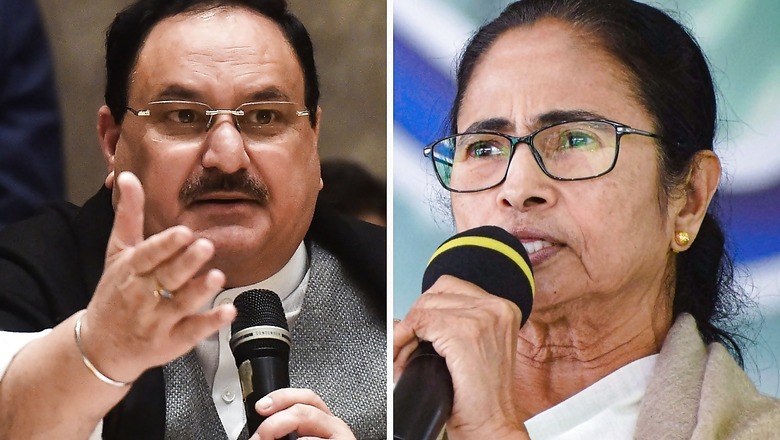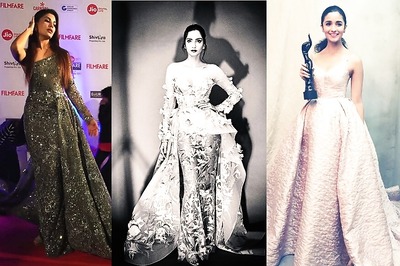
views
West Bengal this time has witnessed an election campaign replete with caste-based politics. Both the Bharatiya Janata Party (BJP) and the Trinamool Congress (TMC) have pulled out all stops to woo the nearly 23.5 per cent Scheduled Caste (SC), 5 per cent Scheduled Tribe (ST) and 17 per cent Other Backward Classes (OBC) share of the state’s electorate to win a majority of the 294 assembly seats on offer, analysts say. The final round of the eight-phase polls is taking place on Thursday with the counting of votes on May 2.
Eyeing a significant share of Bengal’s Dalit and tribal votes, both BJP national president JP Nadda and chief minister and TMC chairperson Mamata Banerjee have separately promised the formation of a commission to include castes like Mahisya, Teli, Tamul and Saha in the OBC category.
Though caste politics was present in West Bengal for decades, this time the TMC and BJP engaged in an electoral battle that was also blatantly divided on religious lines like never before, observers say.
The reasons behind the growing discontent among the Dalits and backward classes are disparities in the implementation of the Mandal Commission report and alleged negligence towards the needs of the communities for decades. The Mandal Commission— set up in 1979 by the-then Prime Minister Morarji Desai’s Janata Party government to consider the issue of caste-based reservation— recognised 177 OBC castes in West Bengal. But the state’s Left Front government under Jyoti Basu recognised 64 communities, including nine Muslim castes, as OBCs and provided them 7 per cent reservation in 1993.
In 2010, the Left government created two different sections under OBC reservation: Category A and Category B.
In Category A, 10 per cent reservation was given to people recognised as ‘more backward’ while in Category B, seven per cent reservation was granted to those designated ‘backward’, and it increased the number of Muslim communities in the OBC list from nine to 53.
The TMC government, which came to power in 2011, persisted with the same policy. As a result, today, Category A has 81 castes, out of which 73 belong to the Muslim community, while Category B has 96 castes, of which 44 are Muslim.
From 1993 to 2020, the number of Muslim castes has increased from nine to 117 (90 per cent of the total Muslim population in the state), of which 65 were added by the current TMC government in the past eight years.
As per the Mandal Commission, which identified 177 castes/communities as OBCs, only 12 castes were from the Muslim community and around 150 were Hindu OBCs in West Bengal. Until now, only 67 castes out of 150 have been included in the OBC list, depriving a majority of Hindu OBCs of the benefit of reservation, critics say. This gave the BJP a robust political platform to appeal to a significant Hindu Dalit vote base in the 2019 Lok Sabha polls where the party put up a stunning show by winning 18 of the 42 seats in Bengal.
Apart from Bauri, Bagdi and Nashya Sekh, the Rajbongshi community of North Bengal and the Matua refugees from erstwhile East Pakistan are dominant groups that could decide the outcome on many seats. They are the two largest Dalit communities in Bengal whom both the TMC and BJP have tried to woo.
Such is the clout of the Matuas in Bengal’s politics that even Prime Minister Narendra Modi visited their renowned temple in Bangladesh’s Orakandi, the birthplace of Matua spiritual guru Harichand Thakur, amid the polls.
Both the BJP and the TMC are trying to project themselves as saviours of Dalits rights and other backward communities in Bengal, which has 68 assembly seats reserved for SCs and 16 for STs.
The Left Front did not mobilise people based on their castes, say analysts. They handled castes in a different way by empowering lower castes against the social elite by calling them “class enemies”. This helped them retain power for 34 years but it had a devastating impact on the state’s economy as industrialists (mostly elites) moved away from Bengal due to labour problems as this working class was largely dominated by lower-caste people, analysts say.
Then in 2011, Mamata rode to power after winning the confidence of Matuas, Rajbongshis, Kamtapuris, Gorkhas, Santhals, Lodhas, Sabars, Nashya Sekhs, Mundas, Bagdis, Bauris and other underprivileged and tribal groups in Bengal.
Apart from the Muslim vote base, most political parties have realised that in the assembly polls, Dalits and other backward communities may hold the key to power.
Read all the Latest News, Breaking News and Coronavirus News here. Follow us on Facebook, Twitter and Telegram.




















Comments
0 comment